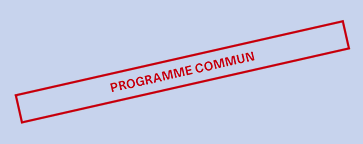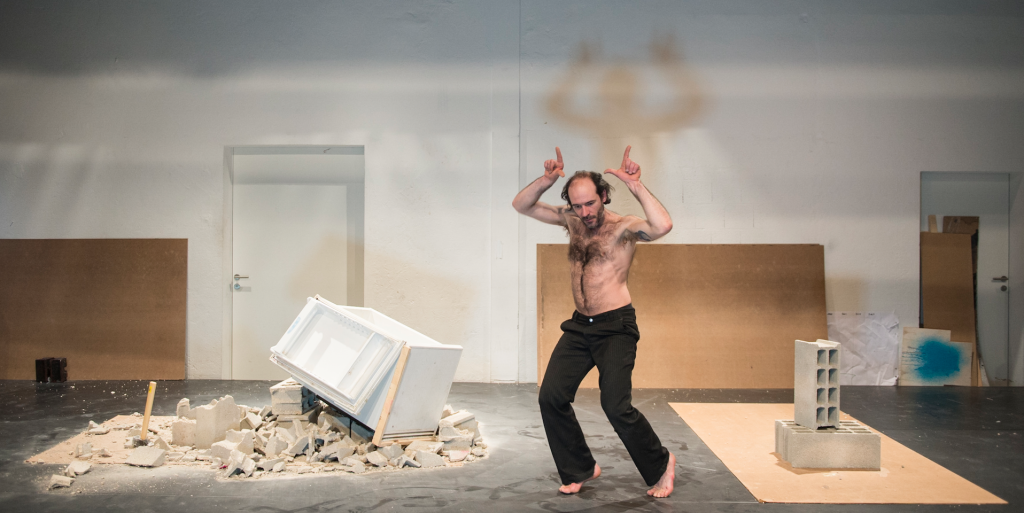Fabrice Gorgerat – Cie Jours Tranquilles
Blanche/Katrina
ARSENIC
creation | theatre | 1h15 app.
Tarif unique: Fr. 13.- *
(* Fr. 8.- abonné-e-s Grand 8 et CityClub Pully)
Thursday, 10.03, 7:00 pm
Friday, 11.03, 9:00 pm
Saturday, 12.03, 3:00 pm
Sunday, 13.03, 6:00 pm
BuyFrom the character of Blanche, the last avatar of a bygone romanticism in a Streetcar Named Desire, to Katrina, the hurricane that pulverised New Orleans in 2005, Tennessee Williams’ heroine will cause a domino effect leading to the destruction of the city.
From the character of Blanche, the last avatar of a bygone romanticism in a Streetcar Named Desire, to Katrina, the hurricane that pulverised New Orleans in 2005, Tennessee Williams’ heroine will cause a domino effect leading to the destruction of the city.
Fifty years separate the character of Blanche, the last avatar of a decrepit romanticism in A Streetcar Named Desire, and Katrina, the devastating hurricane that decimated New Orleans in 2005. We are certain that Tennessee Williams’ character is at the origin of the domino effect that led to the city’s destruction. From a domestic micro-event to a global phenomenon, there is a story waiting to be imagined, a catastrophe to be recounted. The work consists of incorporating Blanche into a foundational myth related to an event that goes beyond our understanding, of nature and a climate on the blink, and in the extraction of the poetry possibly harboured therein. Catastrophes today continue to put man in a tragic position comparable to one experienced during antiquity. Such incidents are certainly not to be attributed to the fury of the gods, though they do consist of the kind of violence and irrationality that leads man to ontological investigations. We think that the theatre is the place to renew these investigations, to give them form and to transcend them. It is urgent to transform our terror into works of art so that we may gain some sort of control over it.
Blanche/Katrina is, after Médée/Fukushima and Manger seul, the last instalment in our triptych about contemporary catastrophes. In order to broaden our dramaturgic research for these three pieces we have chosen to collaborate with researchers from both the social and natural sciences. We put into practice a methodology that, through various confrontations, pushes both scientists and artists to examine their current perspectives more deeply. With Médée/Fukushima and Manger seul we were able to verify the legitimacy of such a process. When we approach catastrophes through both a scientific and theatrical perspective the stage quickly becomes a place of encounter between the irrational and the scientific that, perhaps, only poetry can reconcile.
In the critique of Médée/Fukushima in Le Temps, 19 March 2013, Marie-Pierre Genecand wrote, ‘An impressive tableau of hypnotic force, a resolutely poetic proposition that gives the nuclear accident a body, a face, and why not a soul.’
It is about precisely this: to seize a problematic that from a scientific perspective seems cold and distant – even disquieting – and dissect it on stage so that the human element once again becomes the centre. There is a path that connects the objectivity claimed by science and the fragility of a being that is tormented and ravaged by catastrophes, and it is this adventure that we wish to live with the audience.
Fabrice Gorgerat
Concept/Direction :
Fabrice Gorgerat
Performance :
Julien Faure and Cedric Leproust
Performance and Set design:
Estelle Rullier
Scientific Advisor :
Yoann Moreau
Music :
Aurélien Chouzenoux
Sound assistant
Emmanuel Guillod
Physical training
Tamara Bacci
Costumes :
Karine Vintache
Video :
Marc Olivetta
Technical Direction :
Yoris van den Houte
Administration :
Ivan Pittalis
Associated research team :
Dominique Bourg, Olivier Glassey, Claude Joseph, Danièle c^Chaperon, Martine Hennard, Boris Vejdovsky, Christian Arnsperger, Antoine Guisan, Alain Kaufmann, Martial Genolet, Philip Clark
Thanks to :
Fiamma Camesi, Anabel Labrador, Nelly Niwa, Dominique Godderis, Lionel Haubois
Support from :
The City of Lausanne, Loterie Romande, Pro Helvetia, Migros Pour cent culturel
In Collaboration with :
Interface sciences-société de l’Université de Lausanne
With the support of Volteface, research platform focused on the social aspects of energy transition at the University of Lausanne and Romande Energie > www.volteface.ch
Fabrice uses the stage like an altar to furious beauty. Born and raised in Lausanne, he studied at l’INSAS (National institute for performing arts) in Brussels. He directs the company Jours Tranquilles, and was artist in residence at the Varia theatre in Brussels, la Grange de Dorigny, and regularly collaborates with l’Arsenic. In Lausanne he is also an instructor associated with Chantier Panafricain d’Écriture des Femmes in Abidjan. In his performances, which are very much sensorial immersions, the director often entrusts feminine figures with the task of awakening phantoms. He is very interested in the subconscious, the buried part of us that often recounts human existence through all that escapes us, resists, is uncontrollable and surprising. Gorgerat’s theatre is like dance, in the way the human being is pursued into to the most secret of corners.
Water, ink, blood, dust, grains of rice, nails, milk, hair, broken glass, dirt… Fabrice Gorgerat likes the substance of his material. And feminine characters. In his performances, which are very much sensorial immersions, the director from Lausanne often entrusts the feminine characters with the task of awakening phantoms. Fabrice Gorgerat is concerned with the subconscious, the buried part that speaks of being, in all that escapes us, resists, is uncontrollable and surprising. Whether it be an examination of the consequences of the nuclear accident (Médée/Fukushima), the relationship between father and daughter (Poscaille Paradis), provincial melancholy (Emma), the ritual of waking up (Au matin), or obesity (Manger seul), the artist likes to look beyond the mirror, into the grey zone where it’s rather a question of what is unsaid, between impulsions and torments.
And yet his is not a theatre from the boudoir or closet. Fabrice Gorgerat doesn’t necessarily advocate rapidity. His tableaux may develop at a very slow pace, as though the stopping of time is what allows us to access the heart of certain sensations. And yet the director dares to use excess, extravagance, to express clearly the outrage felt by his characters. Emma in Payerne, a double Romand Emma Bovary, dies of solitude and boredom? The three actresses who reproduce the internal wanderings vomit up black ink after drinking litres of milk. The spectres of Fukushima become enraged because of their inability to show the nuclear scar, a catastrophe that unfolds without sound or odour? The three actresses, witnesses to the horror, spike out in quills, spit nails, tape down their breasts, pull out their hair or breathe in the dust of a city-cemetery. Having effectuated his studies at the INSAS (National institute for performing arts in Brussels), Fabrice Gorgerat uses the stage like an altar to furious beauty, one that overflows with organic liquids and living elements. The pieces of the artist from Lausanne are trajectories in which the sound work of Aurélien Chouzenoux and the images of Estelle Rullier trace the direction and indicate the intention. There has been little or no text in Gorgerat’s work the last few years. As if for him the words were rung out, emptied of their intensity because of overuse. Or else, the words must be delivered majestically. Like the opening conference of Médée/Fukushima, in which Yoann Moreau, dramaturge associated with the company, paints a portrait of the nuclear accident, which is not the end of something but rather the unsettling beginning of a new and calamitous era.
Fabrice Gorgerat likes the substance of his material. And feminine characters. Incarnated by the very engaged actresses, who propose, who dare, and feed the flame without trembling before the excess that lies in store. Water, ink, blood, dust . . . Fabrice Gorgerat’s theatre is much like dance, in how the human being is pursued into the most secret of corners.
A text written by Marie-Pierre Genecand on the occasion of the 20th anniversary of Jours Tranquilles.

